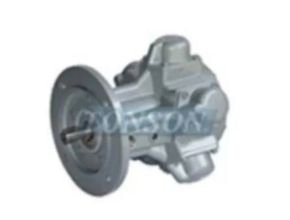The body, plunger, back nut, and body cap are all manufactured from engineering-grade thermoplastic. This provides a high level of wear, UV, and corrosion resistance to ensure years of reliable service. The material is non-toxic and taint-free.

These WaterMark approved* valves are rated to 1400 kPa (200 psi) static shut-off. This means the valve can be installed for the main water supply. * Excludes valves with 125 mm levers
The valves are approved to the AS/NZS 4020 standard which means they can be confidently used in applications that are required for drinking water. *Also known as potable water
The lever and pivot pin are manufactured from quality dezincification brass. This ensures it is resistant to the loss of zinc which would otherwise cause leakage and premature failure. A choice of 3 lever lengths (250, 200, and 125 mm) which makes them suited to a variety of installations.
By using a robust machined cam that interlocks with the plunger it ensures reliable opening and closing of the valve time after time. The valve has been designed for easy disassembly by simply removing the pivot pin and body cap to allow access to all parts.
Application of Philmac EasyPHIL Float Valves
- Agriculture: Stock troughs and water tanks.
- Plumbing: Hot and cold water storage tanks for domestic and industrial applications
- Industrial: Dishwashers and hospital sterilizers
- Commercial: Air-conditioning units.
Benefits of Philmac EasyPHIL Float Valves
Fast and Easy Installation
- Choice of Threads: Philmac offers a range of parallel (fastening) threads or tapered (sealing) threads which makes them suited to a variety of installations. This includes troughs/tanks with pre-fitted tapered inlets or tanks where only a pre-drilled hole exists.
- Easy Disassembly: The valves have been designed for easy replacement of the rubber seal. Simply remove the pivot pin, disconnect the lever assembly, and remove the body cap (where fitted) to allow the piston to slide out and access the seal.
- Minimum Space Required for Installation: Based on a compact body design and a range of lever lengths in the ½” range they are perfect for tight applications such as industrial dishwashers.
- BSP Inlet Threads: The Plumbing and Irrigation sectors use British Standard Pipe (BSP) threads as a standard. Philmac also uses these thread types across the valve range to ensure compatibility with other threaded fittings and make installation easy.
Complete Security
- Corrosion Resistant:
Brass Valve – The bodies, plungers, lever assemblies, backnuts, collars, and pivots pin are manufactured from DZR brass. With a stainless steel seat as standard, it means years of hassle-free operation.
Plastic Valve – The bodies, seats, backnuts and plungers are manufactured from plastic. The lever assemblies and pivot pins are manufactured from DZR brass ensuring longevity of the valve.
Stainless Steel – All components, except the seal, are manufactured from stainless steel for high chemical resistance. - Reliable Operation: High-quality engineered components mean years of reliable operation.
- Positive Shut-Off: The action between the lever assembly and plunger assembly ensures the plunger assembly provides a complete seal against the water inlet and prevents unwanted loss of water.
- Approvals: All valves comply with Australian/New Zealand Standard 4020 which means the valves are suitable for use with drinking water.
High Performance
- Manufactured from DZR brass: Philmac brass float valves are manufactured from dezincification resistant (DZR) brass which means the brass is resistant to corrosion involving the loss of zinc leaving a residue of spongy or porous copper.
- Manufactured from engineering-grade thermoplastic materials: Philmac plastic float valves are Australian-made and manufactured from lightweight high-performance thermoplastic materials which have excellent impact, UV, and corrosion resistance. The material is non-toxic and taint-free.
- High-pressure shutoff: Horizontal float valves are rated to a pressure of 1400 kPa (200 psi) (static shutoff). This is based on using the standard lever arm and recommended float (ball) size.
Complete Coverage
- Wide range: The range of float valves is comprehensive and includes sizes from 3/8” to 2”(DN10 to DN50). In addition, the ½” range is offered with tapered or parallel thread configurations and lever lengths.
Standards and Test of Philmac EasyPHIL Float Valves
Standards
- AS1910: Water Supply – Float control valves for use in hot and cold water.
- AS/NZ 4020: Testing of products for use in contact with drinking water.
- AS1722.1: Pipe threads of Whitworth form par t 1: sealing pipe threads.
- AS1722.2: Pipe threads of Whitworth form par t 2: fastening pipe threads.
- ISO7: Pipe threads where pressure-tight joints are made on the threads.
Tests
- Shut Off Test: Valves are tested for shut off against a hydrostatic water pressure of 2000 kPa (290 psi) or 20 bar.
- Strength Test: Valves are tested for adequate strength for their intended application. This includes testing at the maximum recommended operating temperature and a pressure of 3000 kPa (435 psi) or 30 bar.
- Endurance Test: Operating mechanisms are subjected to 50,000 cycles. This simulates opening and closing operations during the design service life of the valve.
Installation of Philmac EasyPHIL Float Valves
- Remove the back nut and slide the thread through an appropriately sized hole.
- Screw the back nut on by hand and tighten the nut using multi-grips or an adjustable wrench.
- Attach the float to the threaded end of the lever.
- Where necessary bend the lever arm to adjust the water level. This can be done by removing the lever arm assembly. Remove the R-pin and slide the pivot pin with a pair of pliers then slide it out.
- Using a pair of multi-grips or equivalent the lever can then be bent to the necessary angle.
- Adjust the lever arm and then refit. Once the correct lever arm angle is achieved ensure the pivot pin is secured with the R-pin.
Read More Articles:
- SkimOil First Response Oil Skimming Systems
- SkimOil Slotted Pipe Skimmer
- SkimOil Automatic Floating Weir Oil Skimmer-Separator
- SkimOil Monitoring Well Oil Skimmer
- SkimOil Fishboy Tube Type Oil Skimmer




